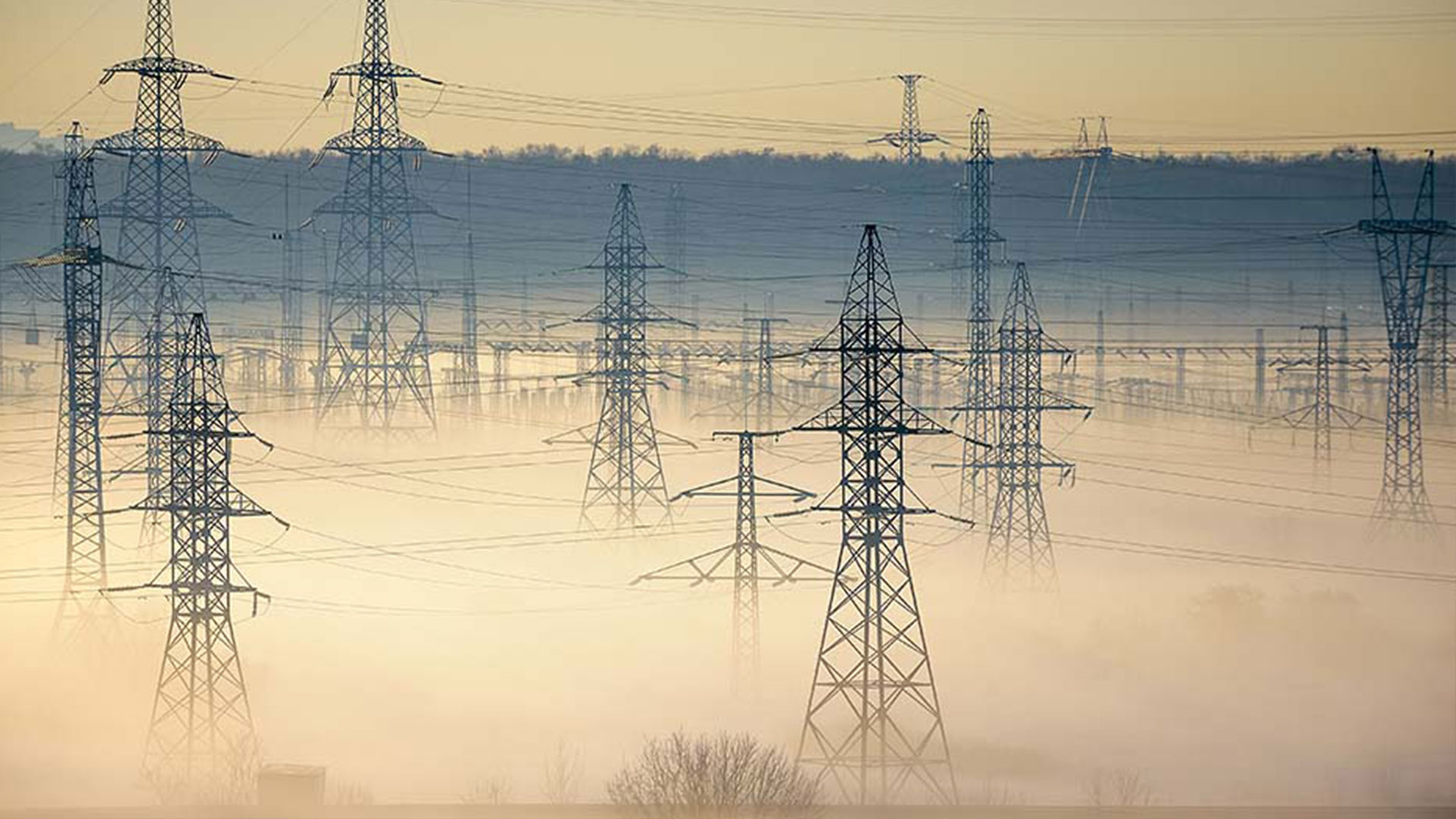Global
Falling lithium-ion battery prices to drive rapid storage uptake
IHS Markit expects prices for lithium-ion battery modules to drop below USD 200 / kWh by 2019, continuing a trend that has seen lithium-ion battery prices fall 70 per cent since 2012. According to the research firm, falling prices are expected to drive rapid storage uptake, with 8.8 GW of grid-connected energy storage predicted to be deployed globally by 2025, up from 1.3 GW in 2016. As a result of the sustained cost reductions, previously “uneconomical applications” such as the co-location of battery storage and solar PV, are expected to surge. California, South Korea and Australia have been identified as leading markets.
Alphabet is developing clean energy storage based on molten salt technology
Google parent company Alphabet Inc. is developing cutting-edge molten salt technology that aims to store wind and solar power for longer periods of time and for less cost than lithium-ion batteries. The technology stores electricity by converting it to thermal energy, which is stored in molten salt and antifreeze. The company claims that the technology has the potential to be many times cheaper than battery storage due to inexpensive materials and that the technology can last for up to 40 years.
AES and Siemens create joint venture for energy storage
US-based energy company The AES Corporation and German-based Siemens AG will form a new global energy storage technology and services company under the name "Fluence". Fluence will sell the Advancion and Siestorage lithium-ion battery technologies currently sold by AES and Siemens, respectively, as well as develop new energy storage technologies and services.
Aggreko to buy energy storage firm Younicos for GBP 40 million
Glasgow-based temporary power provider Aggreko has agreed to buy German-based energy storage company Younicos in a GBP 40 million cash deal. Younicos currently operates a portfolio of 40 energy storage projects worldwide with 200 MW commissioned. Aggreko said the acquisition was in line with its strategy of investing in technology in order to reduce the cost of energy for its customers.
Tesla, Vestas pair up to develop ways to combine storage and wind
The world’s largest wind turbine manufacturer, Vestas, has joined forces with Tesla for the development of energy storage solutions for wind turbines. The deal is part of Vestas' continued efforts to increase its market share through energy storage, with reports that the company has teamed up with as many as ten other battery manufacturers since 2012. For Tesla, the partnership allows the car and battery manufacturer to expand its business, achieve greater economies of scale and a bigger exposure in different markets.
Africa and the Middle East
Dubai Electricity & Water Authority (DEWA) awards 250 MW pumped hydro consultancy to EDF
A consultancy contract for a 250 MW pumped hydro energy storage plant in Dubai has been awarded to French power company EDF by DEWA, the emirate’s main public infrastructure company. Thought to be the first project of its kind in the Arabian Gulf, the installation will use water stored in the Hatta Dam and in an upper reservoir 300 metres above it. The contract is for the design of the plant and related hydro and geological studies. The contract also extends to deep-water tunnel design, dam and hydroelectric power station, tendering for material supply, supervising construction, site installation and on-site testing and commissioning.
South Africa’s Eskom opens battery demo facility for 2 GW energy storage need
South Africa’s main utility Eskom has identified a need for as much as 2 GW of energy storage on its networks, and has opened a testing facility to find the most suitable technologies. South Africa’s Integrated Resource Plan of 2010 called for 18 GW of renewable energy generation capacity to be added in the country which would require up to 2 GW of “additional, daily balanced energy storage within the existing grid” to accommodate it.
Asia Pacific
Multiple Indian ‘Gigafactories’ expected by 2019
At least two global technology leaders could set up Gigafactories to manufacture lithium-ion cells in India in the next couple of years, and most major Indian firms are setting up energy storage divisions, according to the head of the India Energy Storage Alliance.
Energy Renaissance building 1GWh of lithium-ion battery storage manufacturing in Darwin, Australia
Energy Renaissance is constructing a 1 GWh per annum lithium-ion battery storage manufacturing plant at Darwin, in the Northern Territory of Australia, while in related news Clean Energy Finance Corporation has provided funding of AUD 20 million for a 2 Mtpa lithium concentrate mining project in Western Australia.
SolarReserve inks deal with South Australia to supply solar thermal power with storage for 6 US cents
The state with large amounts of renewable energy and a fragile grid prone to blackouts is a prime candidate for CSP-plus-storage. SolarReserve could provide the cheapest option having won a contract to supply the South Australian government with dispatchable solar for between AUD 7.5 and 7.8 cents / kWh.
Tesla will build world's largest lithium-ion battery for South Australia
Tesla has been selected by the South Australian government to provide 100 MW / 129 MWh of battery storage alongside the Hornsdale Wind Farm project being built by French energy provider Neoen near Jamestown. Once completed, the Powerpack system will be over three times as large as its nearest global competitor.
Sungrow’s hybrid solar-storage microgrid powers five islands in the Maldives
Chinese PV inverter manufacturer Sungrow has installed a hybrid solar-diesel-storage system for five islands in the Maldives, consisting of 2.7 MWp of solar and 700 kW / 333 kWh of energy storage. With an average ground-level elevation of 1.5 metres above sea level, it is the world's lowest country and its government has pledged to make the Maldives a carbon-neutral country by 2019.
MPower to deliver 5.6-MWh battery system in Cook Islands
MPower has been selected to design and install a 5.6 MWh battery storage system at the 1 MW Te Mana Ra Solar Farm in Rarotonga, Cook Islands. The project, worth NZD 4.3 million, has financial support from the Asian Development Bank, and EU and Global Environmental Fund and once completed will help to reduce the nation’s reliance on diesel.
Europe
European flywheel battery storage project gets underway
The EUR 4 million (USD 4.51 million), a first for the UK, will be capable of 500 kW peak power and able to store 10 kWh of energy. It will be delivered by a consortium of engineers from the University of Sheffield, flywheel specialists Schwungrad Energie and Adaptive Balancing Power, and product supplier Freqcon.
Acciona starts up the first hybrid wind power-storage plant in Spain
A ‘hybrid’ demonstration plant for storing wind energy (generated by a 3 MW Nordex wind turbine) in batteries has been commissioned by Acciona in Navarra, Spain, and is thought to be the first such project in the country. The project has two battery packs – one for fast-acting response (a 1 MW / 0.39 MWh battery, to deliver 1 MW of energy for 20 minutes) and the other for slower response (a 0.7 MW / 0.7 MWh device that can output 0.7 MW of energy for one hour). Acciona is also developing software that allows for the system analysis, dimension and optimisation of energy storage specifically for pairing with wind farms.
AES’ ‘energy modernisation’ agreement with Northern Ireland includes 100 MW of energy storage
AES Corporation has signed an agreement with a Northern Ireland Environment Agency to build a 100 MW battery storage array. The array will use the Advancion energy storage platform and may be added to AES’ existing 10 MW Kilroot installation or could be deployed at the Ballylumford natural gas power station, or split between the two sites. Upon completion, this will be the largest battery storage installation in the UK.
Vattenfall establishes new solar and storage business unit, with USD 170 million initial investment
Swedish state-owned power company Vattenfall has established a new business unit dedicated to solar-plus-storage, having split its previous Business Area Wind unit into three new units: offshore wind, onshore wind and PV and battery. Over the next two years, Vattenfall plans to invest EUR 150 million in large-scale and decentralised PV and battery projects.
EWE plans large-scale energy storage in salt caverns
German utility EWE AG, partnering with the Friedrich Schiller University, plans to apply the redox flow battery principle to underground salt caverns that are currently used to store natural gas. Two medium-sized caverns could supply a city such as Berlin with electricity for an hour. The caverns are currently expected to start operations in 2023.
Drax planning 200 MW battery at UK coal station to play in grid services market
UK generation company Drax has submitted plans to convert two of its coal-fired units to 3.6 GW of new gas generation (requiring a 15 year capacity market contract) and to add 200 MW of battery storage at the same site.
North America
Utilities in the U.S. poised to deploy energy storage
A recent survey conducted by the Smart Electric Power Alliance indicates that electric utilities in the U.S. are planning to deploy energy storage at all levels. At the utility-scale level, 76 per cent of the 115 utilities polled said they are exploring energy storage procurements to avoid investments in the grid. At the customer level, 80 per cent of the utility respondents said they are planning on offering behind-the-meter energy storage programs to their commercial/industrial customers, while 72 per cent plan on offering such programs to their residential customers.
California and Hawaii drive US to busiest ever quarter for-behind-the-meter energy storage
Q2 2017 was the US’ busiest quarter to date for behind-the-meter energy storage installations, driven in large part by residential adoptions in California and Hawaii. A total of 443 behind-the-meter systems were deployed, which equated to 32 MWh of capacity. Behind-the-meter was 19 per cent of the overall 2016 market and is expected to hold around 26 per cent in 2017 and then double to 52 per cent in 2022.
Powin Energy to deliver Canada’s largest energy storage rollout at 52.8 MWh
Leading energy storage provider Powin Energy will be building and installing six energy storage projects at two sites in Ontario, Canada with a total capacity of 12.8 MW / 52.8 MWh. The projects are being developed in collaboration with Hecate Energy, a global developer, owner and operator of solar, wind and storage projects. The foundation of the projects will be Powin’s modular Stack 140 – which is a modular, purpose-built 140 kWh battery array that easily scales up to multiple megawatt applications.
Deepwater Wind wants to add 40 MWh of Tesla energy storage to Massachusetts offshore project
Developer Deepwater Wind has applied to build a 144 MW offshore wind farm, coupled with 40 MWh of battery-based energy storage from Tesla, off the coast of Massachusetts. The application is in response to a request for proposals issued by the Massachusetts investor-owned electricity distribution companies for long-term contracts to build up to 400 MW of wind energy projects based offshore. At least three wind developers were known to be in contention for contracts: Deepwater Wind and rivals Bay State Wind and Vineyard Wind.
Alevo’s bankruptcy illustrates the pitfalls faced by newcomers in energy storage markets
In August, Alevo USA and Alevo Manufacturing, both part of the Alevo Group, filed for Chapter 11 bankruptcy court protection and are now seeking to liquidate their assets. This is in spite of group successes this year, such as signing the 10 MW Rabbit Hill energy storage project in Georgetown, Texas.
Latin America
GE planning Mexico energy storage projects
General Electric (GE) is developing five energy storage projects in Mexico. While the project sizes will differ, Rodrigo Salim, GE's Latin America director for digital grid solutions said the company is investing at least USD 5 million in each project. The news follows a larger trend of foreign investment in Mexico to greater expand its renewable energy sector.
Chile: 62 MW commissioned at Cerro Dominador solar complex
Spanish renewable energy developer Abengoa announced that it has connected Latin America's first solar thermal plant to the grid, the Cerro Dominador. Located in the Atacama desert in Chile, the plant has 62 MW of photovoltaic power generating capacity and will feature 17.5 hours of thermal storage, enabling a 24-hour electricity supply. The project comes is scheduled to be fully operational by the end of 2017.






